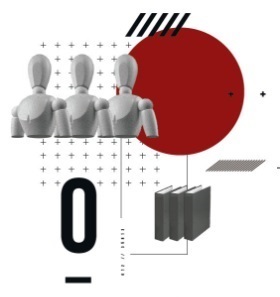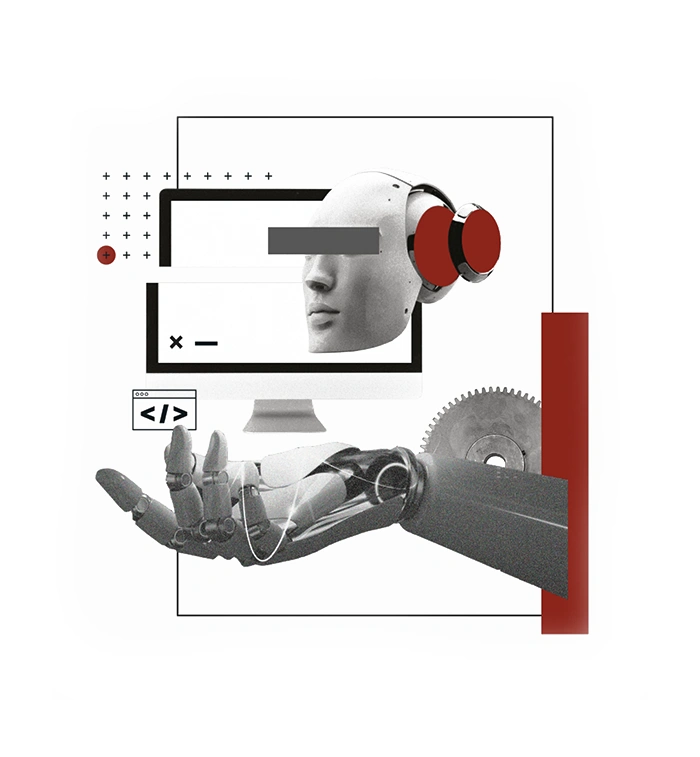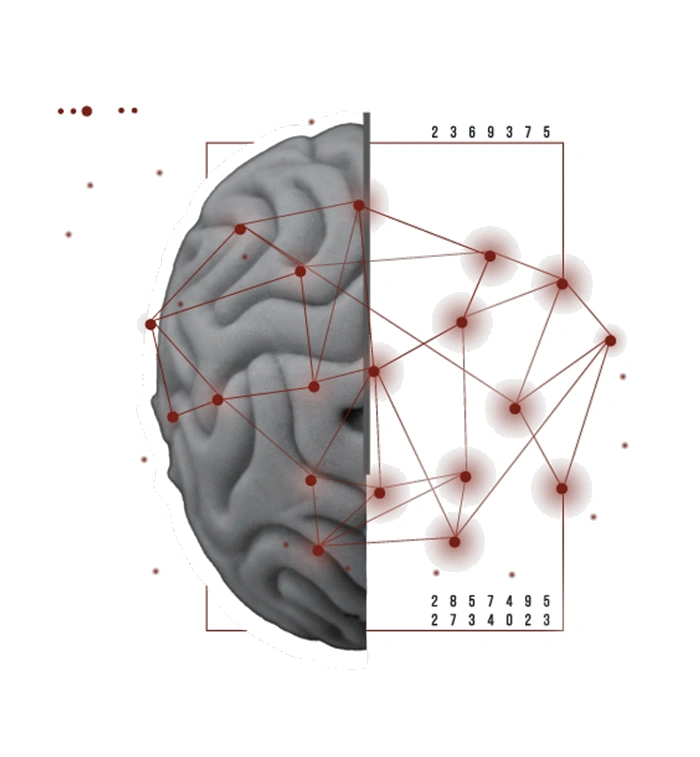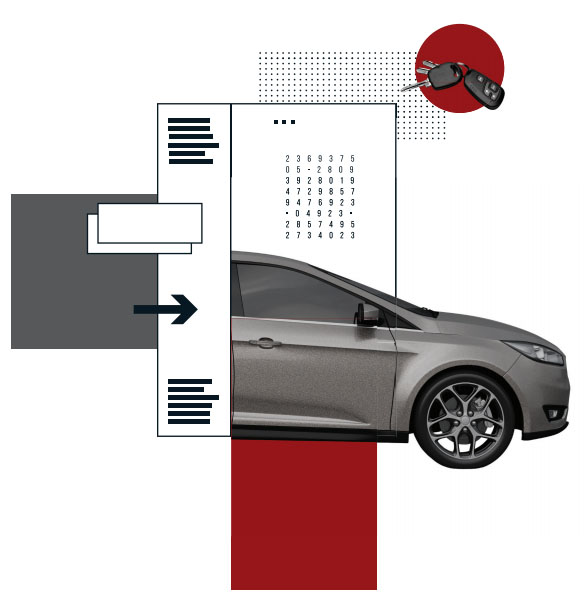Introduction
Artificial Intelligence (AI) is no longer a futuristic concept; it is intrinsically linked to our daily lives, especially in programming. This article explores the impact and prospects of generative AIs in software development. The promise of AI for code assist is clear: to transform the way developers work, increasing productivity, code quality and delivery speed.
AI is the ability of machines to perform tasks that normally require human intelligence, such as learning, problem-solving and decision-making. This technology is ubiquitous in many areas, from virtual assistants to autonomous vehicles, and its impact on software development is constantly expanding. In this article, we will focus on generative AIs and tools such as GitHub Copilot, Gemini and ChatGPT, discussing the impacts of these technologies and the ethical issues involved in their adoption, with an emphasis on the significant changes they can bring to the industry.
Types of AI
- Narrow AI
Weak AI is designed to perform a single task or a restricted set of tasks efficiently. Examples include virtual assistants like Siri and Alexa, recommendation systems on streaming platforms and predictive models in medical diagnostics. This is the stage we are currently at. - General AI
Strong AI, which is still in the development stage, is a technology with comprehensive cognitive abilities, capable of performing any intellectual task that a human being could perform. This type of AI represents a long-term goal for artificial intelligence research. - Superintelligent AI
Superintelligent AI, which remains theoretical, would surpass human intelligence in all aspects, including creativity, problem-solving and social skills. This concept raises significant concerns about safety and ethics.
AI Algorithms and Machine Learning
Modern AI is underpinned by machine learning (ML) and deep learning (DL) algorithms, which allow systems to improve as they are exposed to more data. These algorithms are fundamental to the development of generative AIs, such as large language models (LLM), which can create new data by identifying and replicating learned patterns.


Generative AI Adoption Curve
The adoption of generative AI is in its early stages, as evidenced by the technology adoption curve. At this stage, many companies and professionals are just beginning to explore the capabilities of this technology. This beginning of the adoption curve is not just a point of observation, but a window of significant opportunity.


For companies, entering this early stage means having the chance to position themselves as innovative leaders in the market. Early adoption of generative AI allows companies to optimize processes, improve efficiency and offer high-quality products and services ahead of their competitors. This competitive advantage can result in greater market share and differentiation in a highly competitive environment.
What's more, professionals who invest in acquiring and applying knowledge of generative AI will now be better placed to take advantage of the career opportunities that will arise as this technology becomes more commonplace. The demand for AI skills is growing, and those who specialize early will be the most sought-after, securing top positions and opportunities to lead innovative projects.
Studies indicate that adopting these technologies can increase worker productivity by up to 40%, highlighting the positive impact this technology can have on organizational efficiency. However, in order to reap these benefits, it is essential that both companies and professionals invest in training, development and the integration of these technologies into their operations and business strategies.
So being at the forefront of adopting generative AI isn't just about keeping up with technological trends, it's about shaping the future of work and business. Companies that adopt this innovative mindset will be better placed to lead and set new standards of excellence in the market.
We are only at the beginning of the generative AI adoption curve, which presents both opportunities and challenges. Companies that adopt these technologies strategically will be able to stand out in the market, but will also face challenges related to integration, training and ethical issues.
Generative AI applications


- Coding
Tools such as Github Copilot, Tabnine and Gemini help developers by suggesting code snippets and completing functions, optimizing workflow and reducing the cognitive load on programmers. - Video
Platforms such as OpenAI Sora and invideoAI are able to generate realistic videos from text descriptions, making it easier to produce multimedia content. - Image
Tools such as Midjourney and Microsoft Designer create images based on textual prompts, which has revolutionized areas such as graphic design and digital marketing. - Audio
Services such as ElevenLabs generate high-quality audio, including dubbing and personalized music, expanding the possibilities for producing audio content. - Text
Models such as GPT-3 are widely used to generate articles, summaries and translate texts, improving efficiency in tasks that require natural language processing. - Collaboration
Tools like Copilot for Teams facilitate collaboration between members of development teams, providing contextual suggestions that promote cohesion and efficiency in projects. - Chatbots and Search
Virtual assistants and search engines, such as Perplexity AI, answer questions and carry out searches based on user prompts. The evolution to AI as a service, through models available on Vertex AI or by creating customized copilots, allows more dynamic and specialized chatbots to be built using specific data sources. - Presentation
AIs like gamma.app generate PowerPoint and PDF presentations from textual inputs, automating and speeding up processes that were previously time-consuming.
Market Impact and Productivity
Generative AI is transforming the job market, boosting productivity by up to 40%, especially in highly-skilled sectors. As research has shown, this technology not only automates repetitive tasks but also offers valuable insights, allowing professionals to make faster and more informed decisions.
Sectors such as manufacturing, marketing, sales and operations have seen a significant reduction in costs and increase in revenue with the adoption of AI. For example, in manufacturing, there has been a 66% increase in revenue, while in marketing and sales, the increase has been 65%. These improvements are the result of AI's ability to process large volumes of data and identify opportunities that increase the efficiency and effectiveness of operations.
For companies, early adoption of AI not only offers a competitive advantage by reducing costs and improving productivity, but also positions them as innovation leaders in the market. For professionals, mastering AI tools opens up opportunities for growth and differentiation in an increasingly competitive and data-driven market.
In short, generative AI is reshaping the business landscape, making operations more efficient, boosting productivity and offering new opportunities for companies and professionals alike.


AI for Code Assist
Artificial Intelligence (AI) applied to code assist has become an indispensable tool in any developer's arsenal. Rather than replacing the programmer, these tools act as intelligent assistants, automating routine tasks, suggesting improvements and even predicting the next step in coding, as illustrated in the image.


Today, AI-powered code assist tools help eliminate repetitive work and reduce errors, allowing developers to focus on more complex and creative challenges. They offer contextual suggestions, complete code snippets, and even help with refactoring and automatic documentation. However, final control still remains in the hands of the programmer, who adjusts, validates and decides how to integrate these suggestions into their solution.
In short, AI for code assist represents a technological co-pilot, who guides and assists the developer throughout the creation process, but always with the indispensable presence of human experience and judgment. This balance between automation and human supervision is what boosts productivity and innovation in software development.
Code Assist's main tools
- Github Copilot:
Developed in partnership with OpenAI, Github Copilot acts as a programming assistant, suggesting lines of code, completing functions and offering best practice recommendations. - Tabnine:
It uses AI models to predict and complete code, increasing developer productivity by reducing the time needed to write repetitive code. - Gemini Code Assist:
Code assist tool that provides intelligent support during development, helping you to write high-quality code more efficiently.


Code Assist benefits
- Increased Productivity: Developers can write code faster and with less effort thanks to automatic suggestions.
- Improved Code Quality: Best practice suggestions and automatic unit tests help to maintain a high standard of quality.
- Error reduction: Automatic error correction and contextual suggestions minimize the incidence of bugs.
- Speeding up delivery timesAutomated processes and continuous assistance speed up the development cycle, accelerating the launch of new features.
Additional Resources
Code assist tools also contribute to the automatic generation of documentation, code quality analysis and automated testing, ensuring that the code produced is efficient and error-free.
Code Assist Use Cases


- Code suggestions: AI tools can suggest code snippets based on the context of what is being written, saving developers time and effort. This is particularly useful for speeding up development, reducing the need for external research and maintaining code consistency.
- Automatic Completeness: AI can automatically complete functions and methods, ensuring that the syntax and logic are correct. This not only speeds up the coding process but also helps to avoid common errors that can arise during manual writing.
- Code refactoring: AI tools help refactor code, improving readability and efficiency without changing functionality. They identify suboptimal or redundant patterns and suggest improvements, which is essential for keeping code clean and sustainable over time.
- Code Analysis: AI can analyze the code for errors and vulnerabilities, suggesting corrections and improvements. This type of analysis is crucial to ensuring the security and robustness of software, especially in large, complex projects where small errors can have major impacts.
- Automated documentation: AI can generate documentation for the code, describing how functions and classes work in a clear and concise way. This facilitates maintenance and collaboration, ensuring that all team members have a clear understanding of what the code does and how it should be used.
- Code transformation: AI can be used to transform code into different languages or standards, allowing developers to migrate or integrate systems more easily. This is especially useful in projects that involve several platforms or need to be adapted to new technologies.
- Troubleshooting: AI tools can help identify the root cause of a problem in the code and suggest solutions, reducing debugging time and increasing the effectiveness of the development process.
- Automated Testing: AI can generate and execute automated tests, ensuring that the code works as expected in different scenarios. This not only increases test coverage but also identifies problems before they reach the production environment.
- Test mass: The automatic generation of test data is another powerful application of AI, which creates representative data sets to test different aspects of the software, ensuring that it works correctly with a variety of inputs.
- Quality Analysis: AI can assess code quality based on established metrics, offering insights into areas that need improvement. This helps maintain high development standards and ensures that the final software is of high quality.
- Autocomplete: AI-based autocompletion tools go beyond simple text suggestions, offering contextual and precise conclusions for functions and variables, increasing the speed and accuracy of development.
- Automated comments: AI can suggest or generate comments in the code, explaining the functions and logic used. This improves readability and makes it easier for other developers to understand the code, especially in large teams.
These use cases demonstrate how AI applied to code assist can dramatically improve the efficiency and quality of software development, offering support at every stage of a project's lifecycle, from initial code generation to documentation and ongoing maintenance.
GitHub Copilot: An Intelligent Assistant for Developers
GitHub Copilot, developed in partnership with OpenAI, is an innovative tool that uses artificial intelligence to act as a programming assistant. It offers valuable support to the developer, suggesting code snippets, completing functions and helping to solve complex problems. Let's explore how GitHub Copilot integrates into the developer's workflow and addresses issues of productivity and confidentiality.
Compatibility with languages and tools
GitHub Copilot is highly compatible with a wide range of programming languages and development tools. It can be integrated with popular editors such as VS Code, Visual Studio, Neovim and JetBrains IDEs, allowing developers from various platforms to take advantage of its features. In addition, Copilot offers support for various languages, from the most common ones such as JavaScript, Python and TypeScript, to lesser-used languages such as Ruby and Go. This flexibility makes Copilot an indispensable tool for developers working with different technology stacks.


Productivity Gains Based on Research
Research indicates that GitHub Copilot has a significant impact on developer productivity. Data shows that 46% of the code in projects where Copilot is used is generated by the tool, which reflects its effectiveness in automating repetitive tasks and reducing the time needed to write code. In addition, 55% of developers reported an increase in productivity, and 75% expressed greater satisfaction in their work when using Copilot. These figures show how Copilot not only speeds up the development process, but also contributes to a more satisfying and efficient working environment.


Confidentiality and Data Security
Data confidentiality and security are central concerns for developers using AI tools. GitHub Copilot addresses these issues rigorously, ensuring that data in transit is always encrypted. The tool has been developed with a strong focus on privacy, storing no personal user data, including source code.


Copilot uses only anonymized and aggregated data to improve its performance, training its AI models without compromising users' privacy. In addition, GitHub Copilot complies with data protection regulations such as the GDPR (General Data Protection Regulation) in the European Union and the CCPA (California Consumer Privacy Act) in the United States, ensuring that the highest standards of privacy are maintained.
The tool also offers security certifications, such as ISO 27001, which demonstrates GitHub Copilot's adherence to robust information security management practices. This ensures that Copilot not only helps developers to be more productive, but also protects sensitive information with the highest security standards.
Prices
GitHub Copilot offers different pricing plans that meet different needs, whether for individuals or companies:
- Individual Plan: It costs $10 per user per month and is an excellent option for independent developers or freelancers who want to increase their productivity with the help of AI.
- Business Plan: Available for $19 per user per month, this plan is ideal for small and medium-sized businesses that want to equip their teams with a tool that improves collaboration and development efficiency.
- Enterprise Plan: At a cost of $39 per user per month, the Enterprise plan is designed for large organizations that need a robust solution with additional support and advanced security and compliance features.
Prompt Engineering
As generative AI tools, such as GitHub Copilot, become increasingly essential for developers, the Prompt Engineering is emerging as a key strategic discipline. Prompt engineering is the practice of formulating commands (prompts) that guide AI to generate more effective and relevant responses.
In an environment where precision and clarity are crucial, understanding and applying prompt engineering principles can significantly amplify the impact of these tools.
- Simple
- Definition: Keep the prompt direct and clear.
- Practice: Use simple language, avoiding complex jargon. Short sentences help the AI to better understand the context and the intention.
- Example: Instead of “Write an algorithm that computes the sum of a series of given integers”, use “Write a code to add integers”.
- Specific
- Definition: Be specific about what you want the AI to do.
- Practice: Include specific details and avoid generalizations. The more precise the prompt, the more aligned the AI's response will be with your needs.
- Example: Instead of “Explain a science concept”, use “Explain the concept of photosynthesis in plants”.
- Short
- Definition: Provide information briefly and concisely.
- Practice: Structure the prompt with the minimum number of words necessary to convey the intention clearly.
- Example: Instead of “What are the benefits and processes of photosynthesis?”, use “Describe photosynthesis and its benefits”.
The application of prompt engineering not only optimizes interaction with AI models, but is also crucial for the successful adoption of technologies such as code assist. By mastering these techniques, developers can improve efficiency, reduce ambiguity and obtain results that add more value to the development process. This makes Prompt Engineering an indispensable skill in the age of generative AI.
One way to achieve efficient prompts is to follow a template similar to the one below:
“The perfect Prompt
You are a passionate developer who has transformed your team's work environment into a dynamic and inclusive space, promoting member engagement and productivity in innovative ways over the past year. Recognizing the positive impact of these changes, several fellow developers have expressed an interest in learning more about your strategies and approaches.
Write a message to share in an e-mail group with interested developers.
The message should detail the techniques and tools you have implemented, share some of the challenges faced and how they were overcome, and offer your support as they try to adapt and implement these ideas in their own teams. Use inspiring and supportive language.
[PERSONA] [CONTEXT] [TASK] [FORMAT] [EXAMPLE] [TONE]”
Ethical issues in AI
The implementation of generative AIs and code assist tools, such as GitHub Copilot, brings great benefits, but also raises ethical questions that need to be addressed. Here are the main points to consider:


Bias and Fairness
AI models can reflect biases present in the data on which they have been trained. It is crucial to mitigate these biases to ensure that AIs are fair and equitable, and avoid perpetuating inequalities.
Transparency and explainability
Transparency is essential for users to trust AI decisions. Tools such as GitHub Copilot should be clear about how their suggestions are generated, allowing developers to understand and adjust the decisions made by the AI.
Privacy and Security
The use of AI involves large volumes of data, which raises privacy concerns. Tools such as GitHub Copilot adopt data protection standards such as GDPR and CCPA, ensuring that user data is used securely and responsibly.
Governance and Accountability
AI governance should include clear policies on who is responsible for automated decisions, as well as monitoring and auditing mechanisms to ensure the responsible use of technology.
Inclusion and Social Impact
AI must be accessible and promote inclusion, considering its social impact. AI tools must improve productivity without compromising the diversity and dignity of individuals.
Preserving the Human Domain
It is important that AI is seen as an ally to expand human capabilities, without replacing human judgment and control in critical decisions.
Conclusion
Artificial Intelligence, especially generative AI, is transforming software development and other industries. Tools for code assist AI-based technologies are increasing productivity, improving code quality and reducing delivery times. However, it is essential to address ethical issues and ensure that AI is used responsibly and transparently. As technology continues to advance, integrating AI into digital product development offers immense potential for innovation and efficiency.
By adopting these technologies, you enable your team to deliver high-quality software faster and more efficiently, reducing costs and increasing the profitability of your projects. At the same time, attracting and retaining talent becomes easier by offering a modern and innovative working environment.
AI doesn't replace the developer, but equips them with superpowers to reach new heights of productivity and innovation. Together, we can build the future of software development, driven by artificial intelligence.
By: Marcus Couto, Arquiteto de Soluções na Montreal.
References:
GitHub General Privacy Statement – GitHub Docs
GitHub Copilot Trust Center – GitHub Resources
GitHub Copilot X: The AI-powered developer experience – The GitHub Blog
The state of AI in 2023: Generative AI’s breakout year | McKinsey
How generative AI can boost highly skilled workers’ productivity | MIT Sloan
Despite buzz, generative AI tools such as ChatGPT see minimal daily use, survey finds | Euronews























